The book "The Illusion of Life: Disney Animation" was published in 1981 by Disney animators Ollie Johnston and Frank Thomas. These principles are based on the work of Disney animators from the 1930s onward in their quest to create more realistic animation. Some have referred to the book as the "Bible of animation," and some of its principles have been adopted by many traditional studios.
As discussed in the book, here are the 12 Principles of Animation:

1. Squash and Stretch
A character is given the illusion of weight and volume as it moves.
2. Anticipation
A movement that prepares the audience for a major action the character is about to perform such as a change of expression or getting ready to jump.

3. Staging
In essence, it is used to direct attention to the most important aspects of a scene.
4. Straight Ahead and Pose to Pose Animation
From beginning to end, straight-ahead action scenes are animated frame by frame.
Pose animation creates keyframes, then fills in the intervals later.
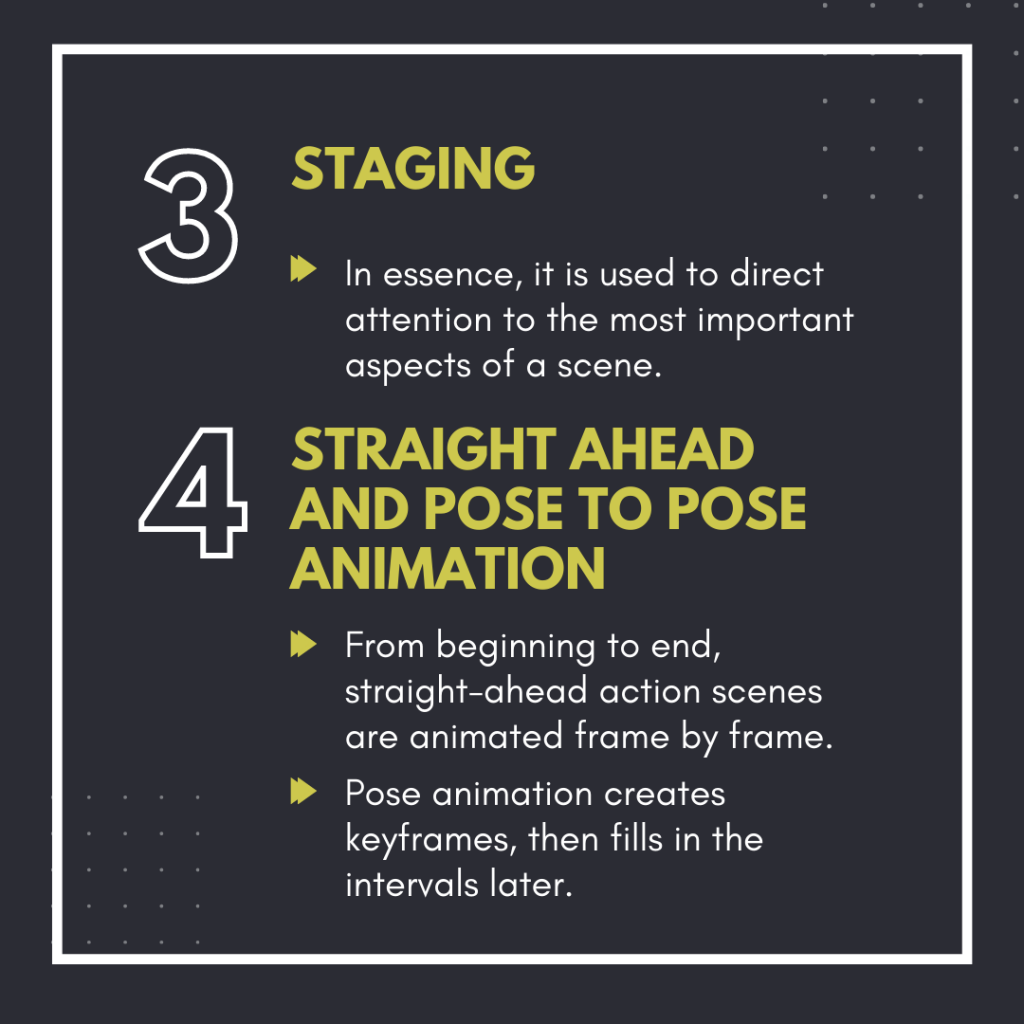
5. Follow Through and Overlapping Action
Follow through is the extra movements of a character or object after a certain action. On the other hand, overlapping action is the combination of 2 moving things commencing at different paces or times.
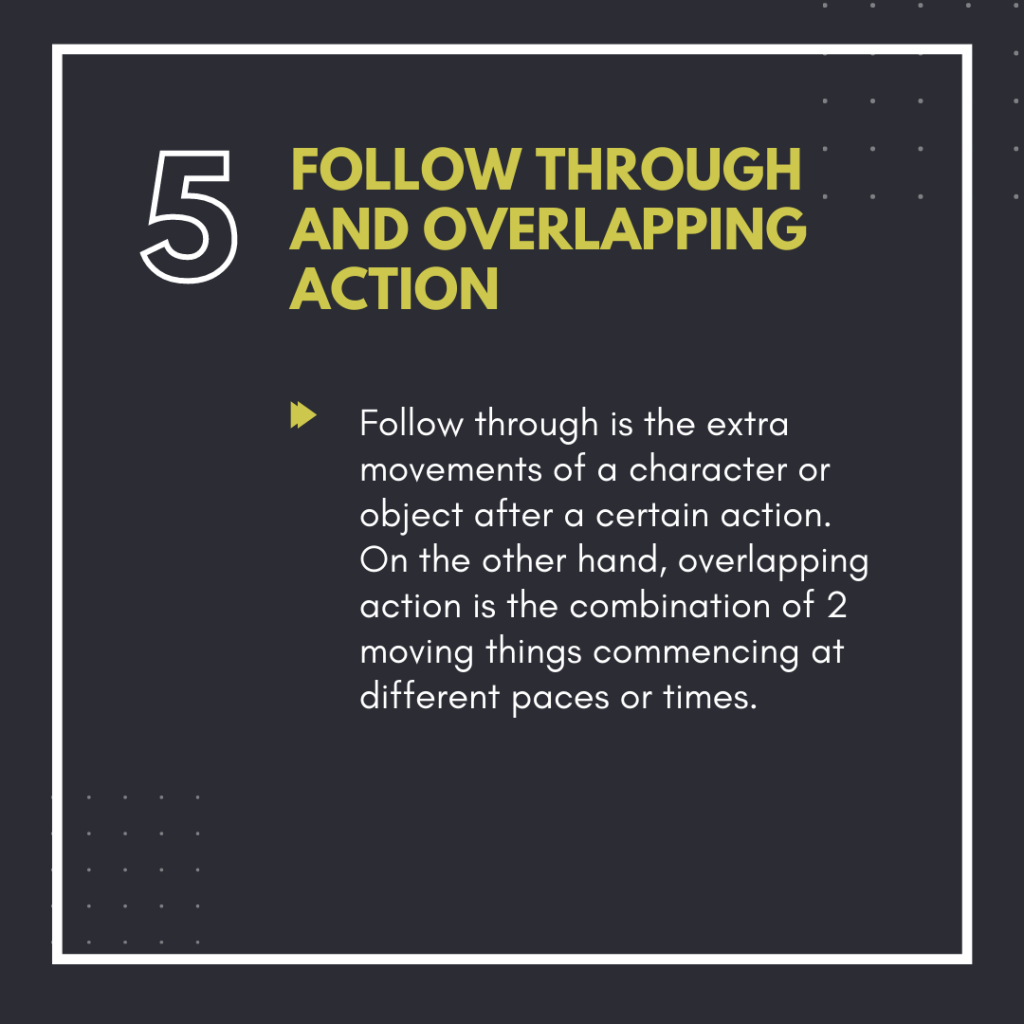
6. Slow-out and Slow-in
A slow-in and slow-out effect is created by drawing pictures during the beginning and end of an action, in order to produce more realistic movements.
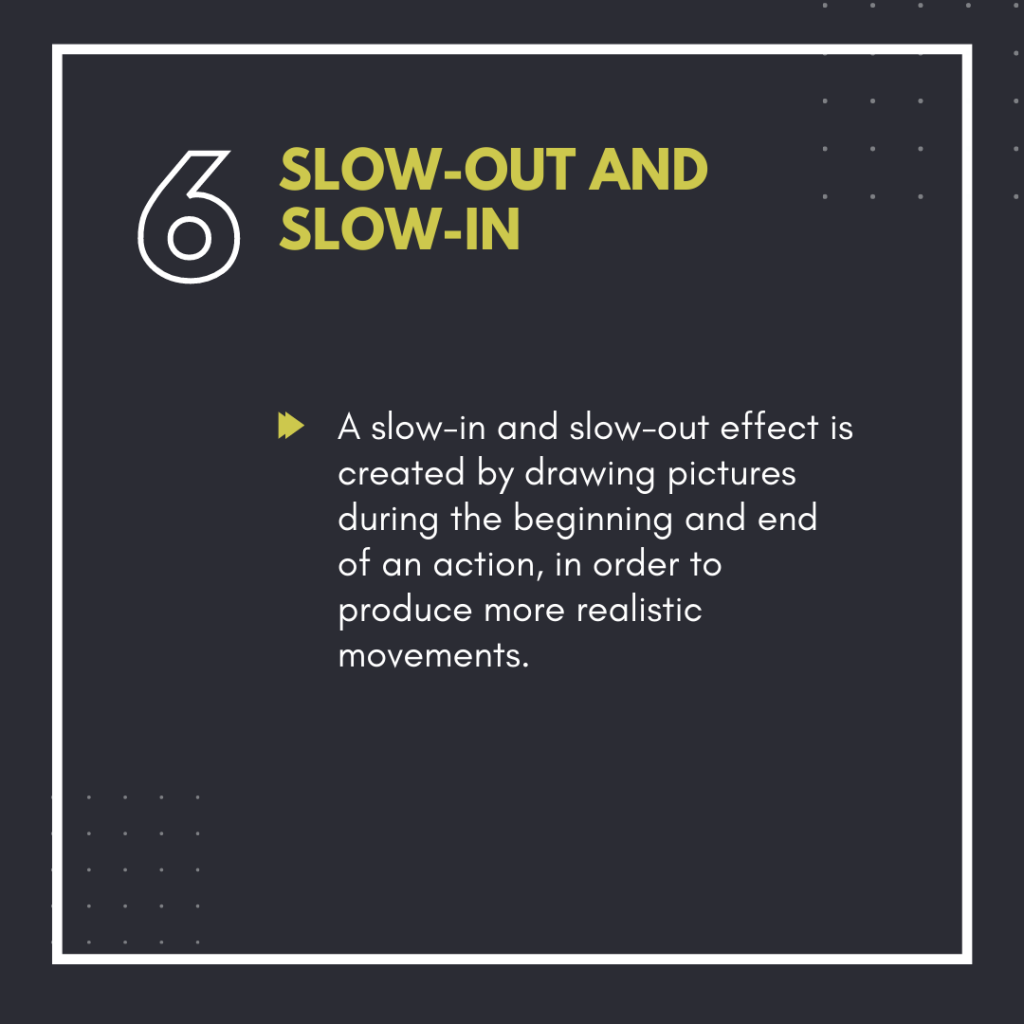
7. Arcs
Rotating a joint on a moving limb or throwing an object along a parabolic trajectory are examples of how this technique can be applied.
8. Secondary Action
Provides additional minor secondary actions to support and give more depth to a primary action.
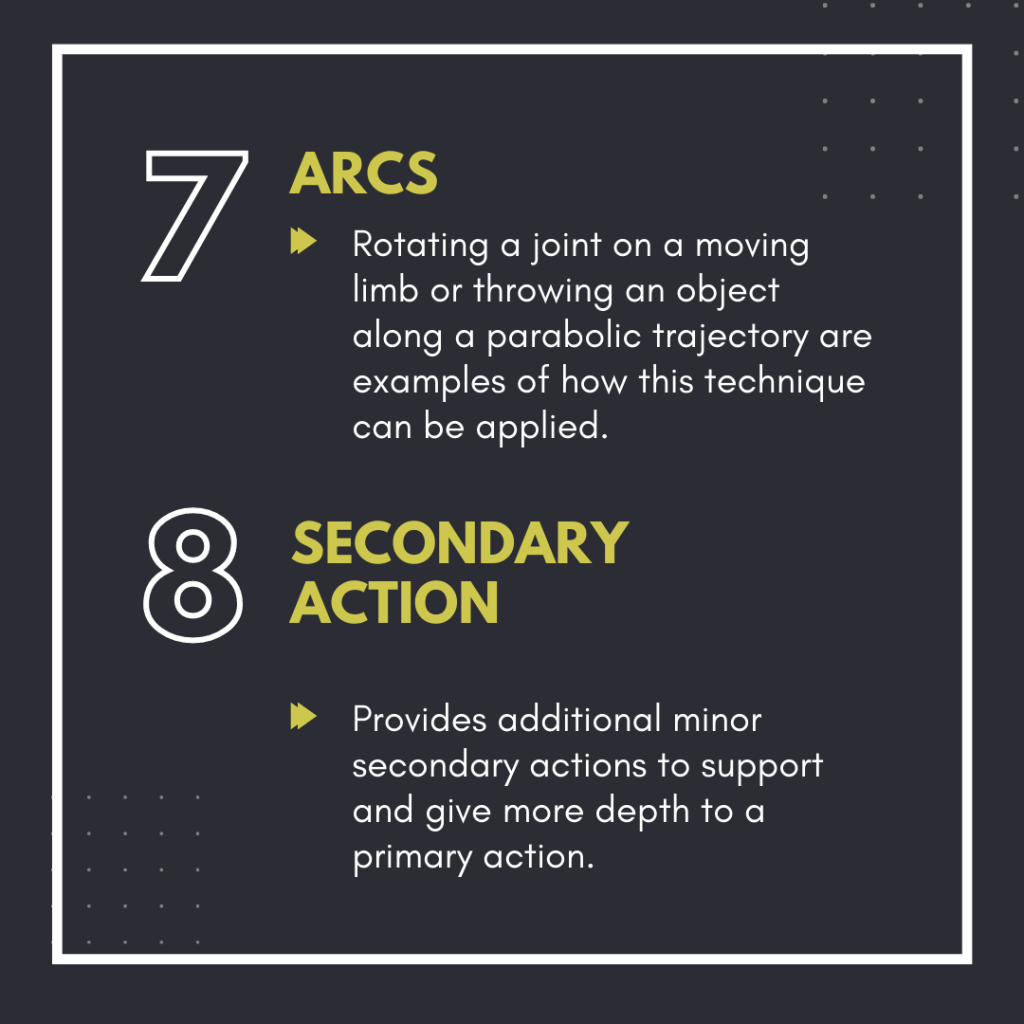
9. Timing
An action is defined by the number of drawings or frames which corresponds to the speed of the action on film.
10. Exaggeration
A parody of facial features, expression, poses, attitudes and actions.

11. Solid Drawing
Taking into account forms in three-dimensional space, or giving them volume and weight.
12. Appeal
The other term for charisma. It makes the viewer feel that the character is real and interesting.
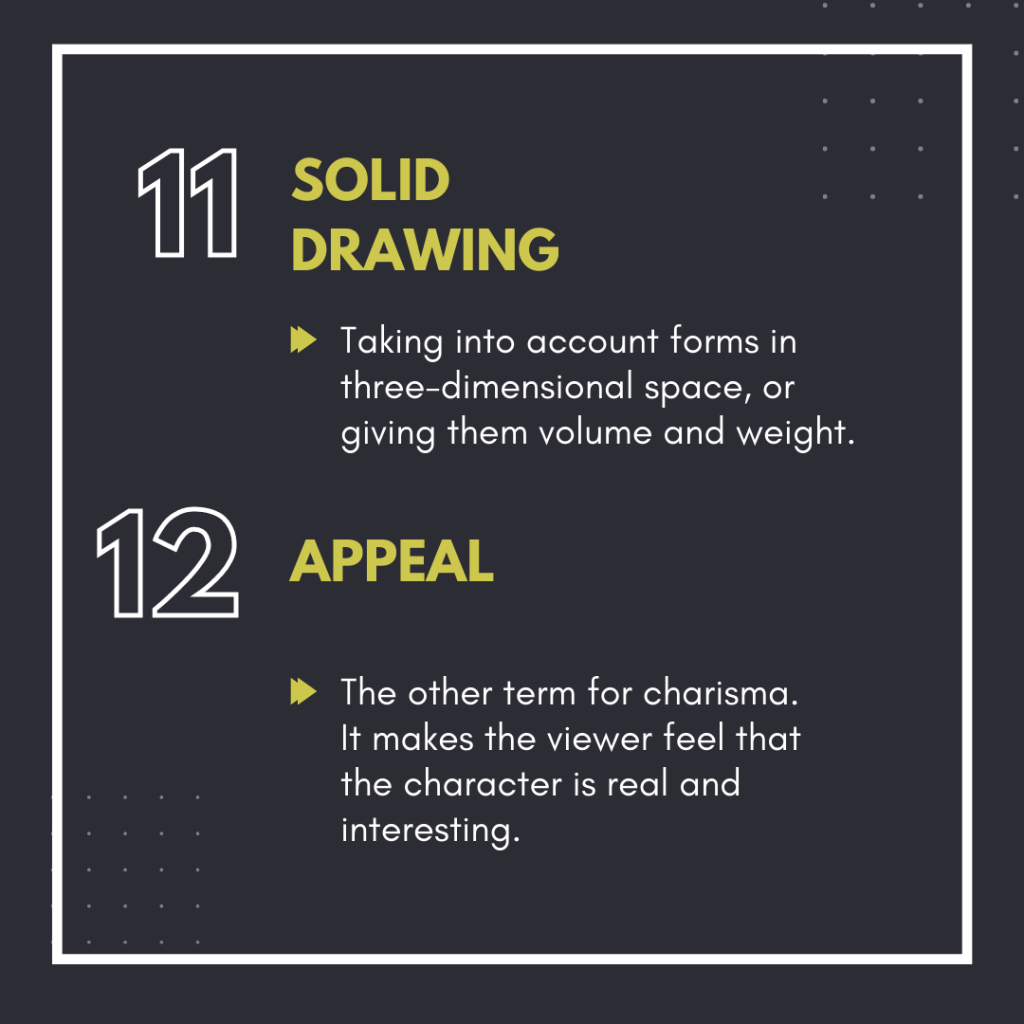
Want to Learn How to Get More Animation Clients? Sign up for our FREE Masterclass!




